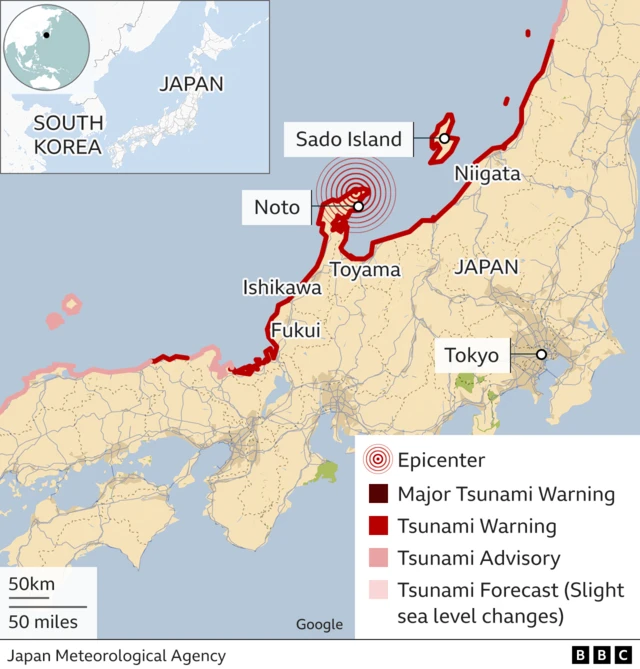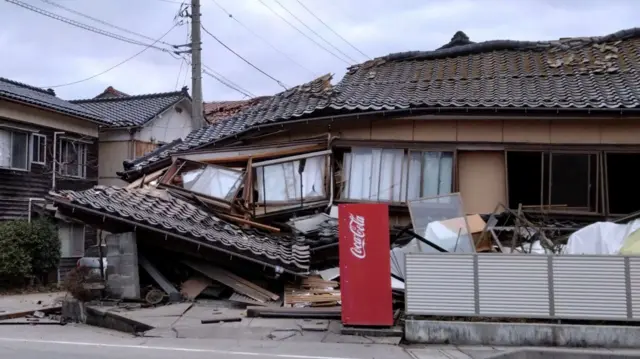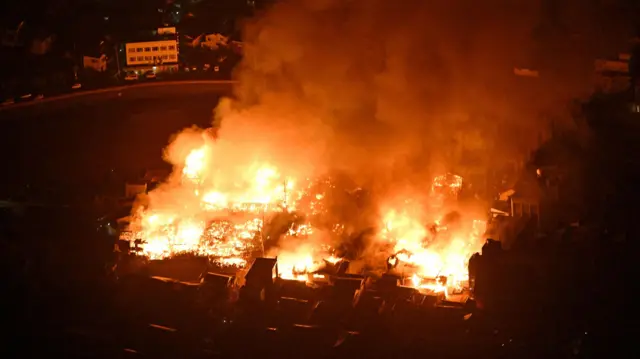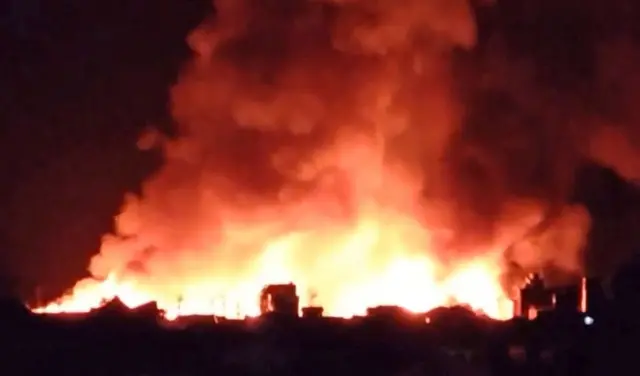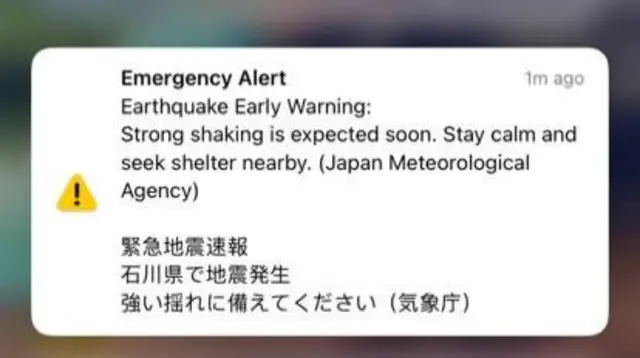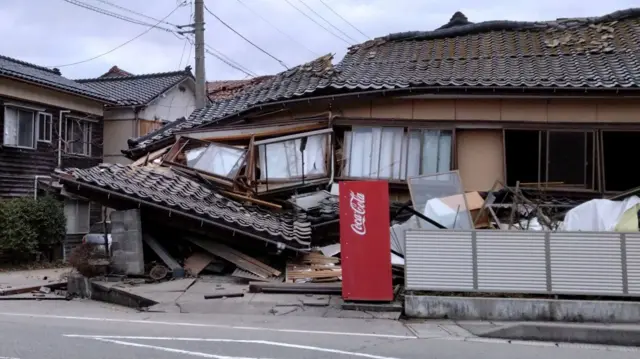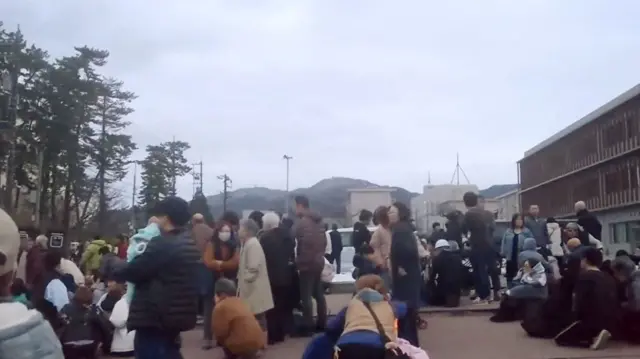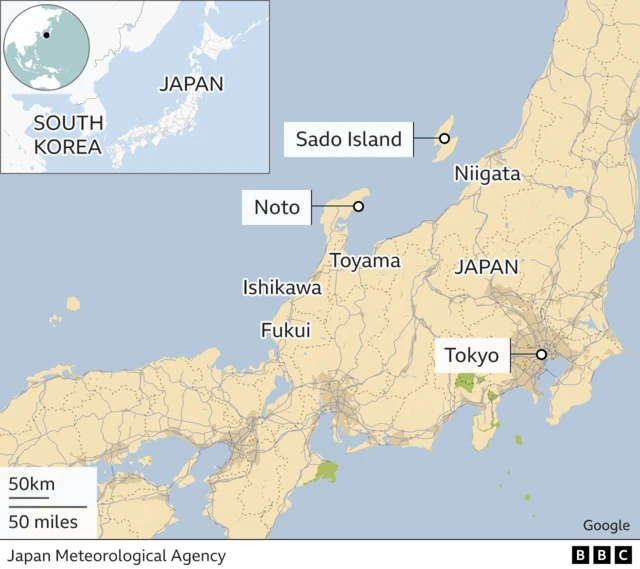Tsunami waves could bounce back and forth - geologistpublished at 14:44 GMT 1 January 2024
The major hazard of this tsunami has now been reduced, experts say, because the risk lessens over time following the initial quake.
However, Prof David Tappin from the British Geological Survey has told Radio 4's World at One there is a unique aspect to a tsunami in this particular area because of the enclosed sea, which means it “might bounce backwards and forwards between the coast of Japan and the coast of Asia”.
He says says the effect is called a seiche, and likens it to sitting in the bath and sloshing the water backwards and forwards.
But Prof Tappin says Japan is "one of the best prepared countries" when it comes to earthquakes and the population is "well educated" about the risks.
He adds he is hopeful there will not be many casualties from today's earthquake because of the country's preparedness.
